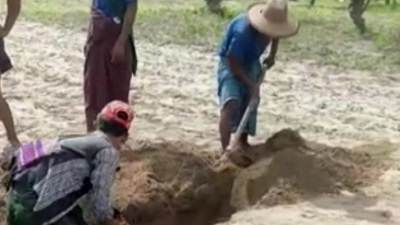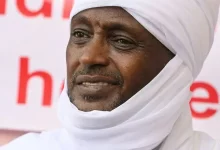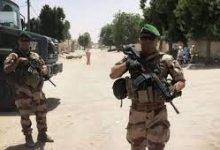
The Myanmar military carried out a series of mass killings of civilians in July that resulted in the deaths of at least 40 men, a BBC investigation has found.
Eyewitnesses and survivors said that soldiers, some as young as 17, rounded up villagers before separating the men and killing them. Video footage and images from the incidents appear to show most of those killed were tortured first and buried in shallow graves.
The killings took place in July, in four separate incidents in Kani Township – an opposition stronghold in Sagaing District in Central Myanmar.
It’s thought the killings were a collective punishment for attacks by militia groups demanding a return to democracy, following a military coup in February. A spokesman for the military government did not deny the allegations.
The military has faced resistance from civilians since it seized control of the country, which is also called Burma, deposing a democratically-elected government led by Aung San Suu Kyi.
The BBC spoke to 11 witnesses in Kani and compared their accounts with mobile phone footage and photographs collected by Myanmar Witness, a UK-based NGO that investigates human rights abuses in the country.
The largest killing took place in Yin village, where at least 14 men were tortured or beaten to death and their bodies thrown in a forested gully.
The witnesses in Yin – whose names we have withheld to protect their identities – told the BBC the men were tied up with ropes and beaten before they were killed.
“We couldn’t stand to watch it so we kept our heads down, crying,” said one woman, whose brother, nephew and brother-in-law were killed.
“We begged them not to do it. They didn’t care. They asked the women, ‘Are your husbands among them? If they are, do your last rites’.”
A man who managed to escape the killings said that soldiers inflicted horrifying abuse on the men for hours before they died.
“They were tied up, beaten with stones and rifle butts and tortured all day,” the survivor said.
“Some soldiers looked young, maybe 17 or 18, but some were really old. There was also a woman with them.” -BBC





